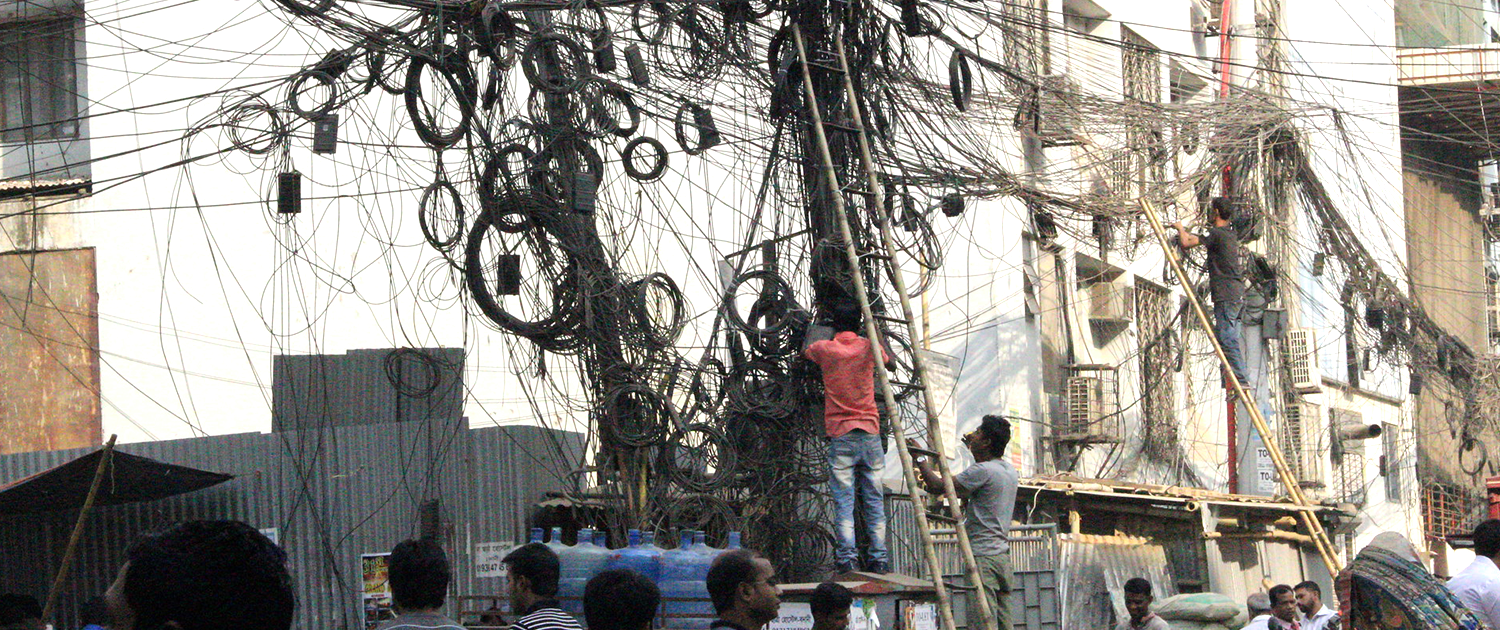With nearly a quarter of the world’s population living in South Asia, the challenges of developing a resilient Internet are numerous even when discounting political tensions, economic crises, and natural disasters that currently and historically destabilize the region.
This week, network operators from across the region have converged in Dhaka, Bangladesh for the 39th South Asian Network Operators Group (SANOG) Forum to discuss the latest best practices and operational issues and technologies that they are implementing to maintain and grow their networks.
In light of this, and the impending release of the Internet Society Global Internet Resilience Index (IRI), here’s a short analysis of the health and resilience of the Internet in the region to provide some insight into the technical and market challenges the South Asian Internet community is currently facing.
South Asia’s Internet Resilience Greater than Americas
To start, Asia’s overall Internet resilience is a respectable 50% (Figure 1) — respectable given that more than half of the world’s population lives in the region.
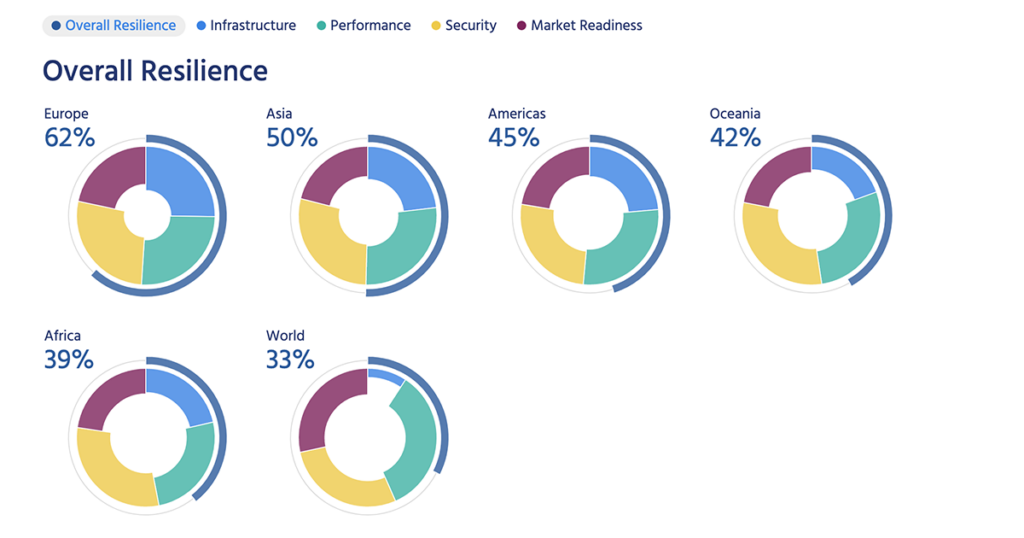
If we zoom in, we can see that there’s little variance between the sub-regions (Figure 2) with South-Eastern Asia leading the way with 53% and Central Asia still a respectable 44% (greater than Oceania and Africa and just shy of the Americas).
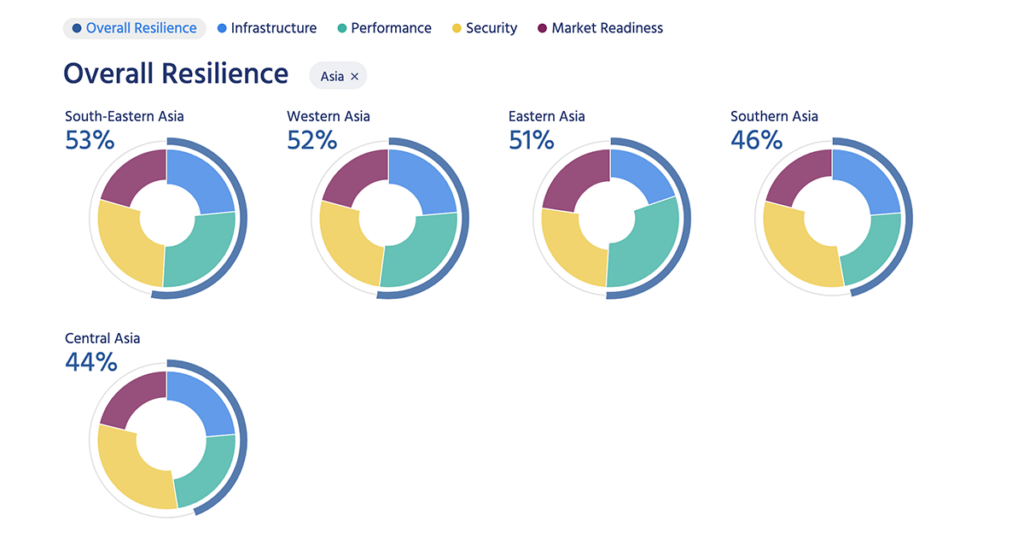
Zooming in again, eight of the nine countries in Southern Asia have respectable index scores (Figure 3), with Bhutan leading the way with 56%, equal 14th in the whole of Asia.
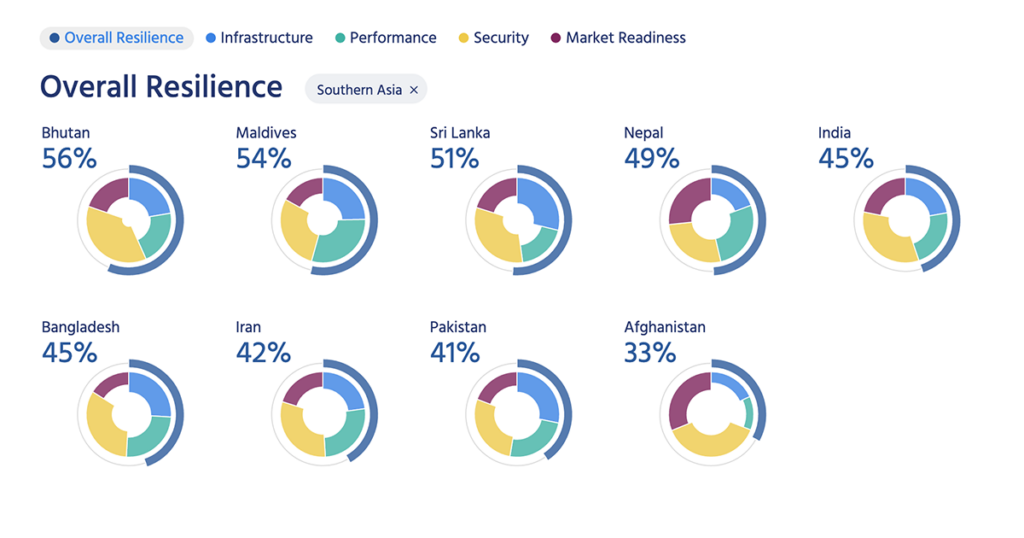
On the other end of the spectrum is Afghanistan at 33%, understandably given the recent political upheaval that the country has faced. It bears mentioning its overall Internet penetration (Figure 4) is far below its neighbors too. And in many respects, the scores for the top two ranked countries, Bhutan and the Maldives, need to take into consideration the population size and Internet penetration of these countries compared to their far larger neighbors as well.
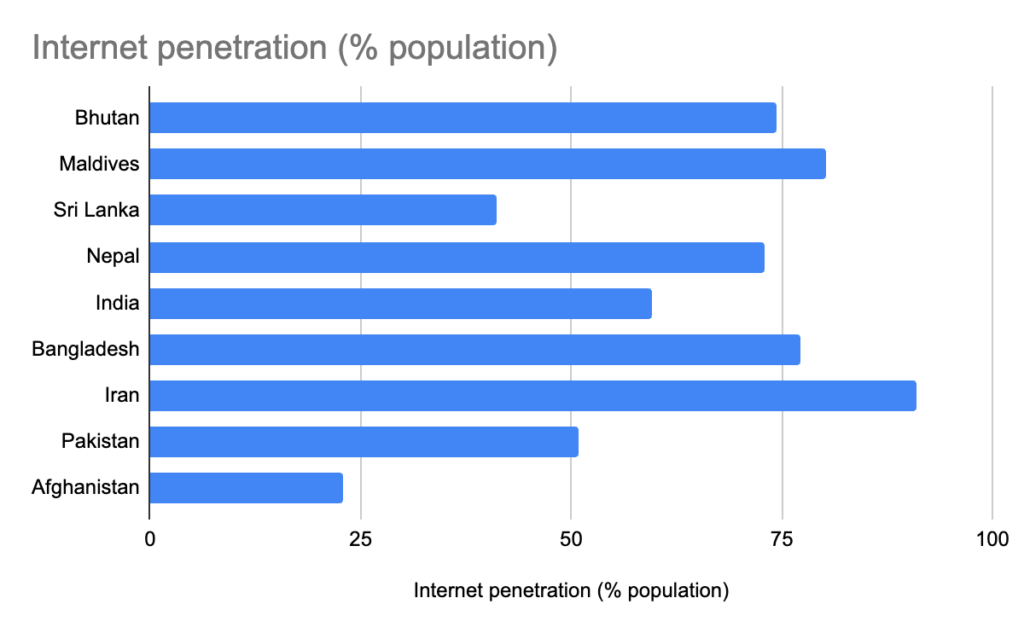
How do you Measure a Country’s Resilience?
You’ll note in the first three figures the different colored donut charts under each Index score. The colors relate to four components (pillars) that contribute to the overall resiliency and smooth operation of the Internet: Infrastructure, Performance, Security, and Market Readiness.
If we plot these pillars against one another (Figure 5) we can start to see where countries are excelling in their Internet resilience and where they are left wanting.
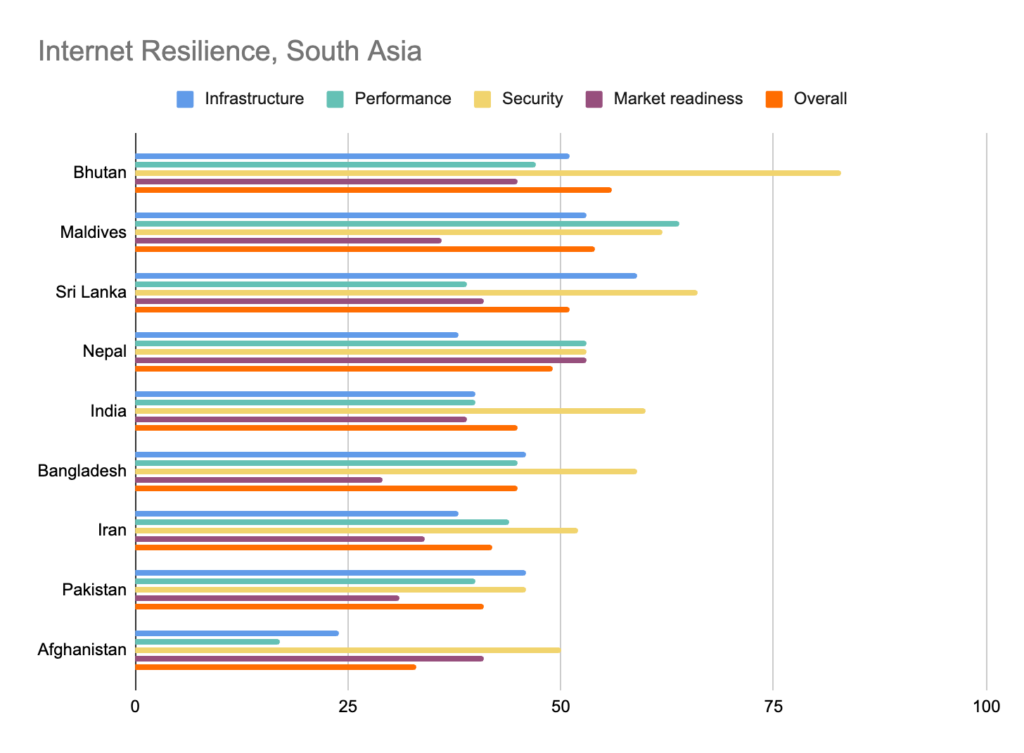
For some countries, there is quite a bit of disparity between these four pillars. For example, Bhutan’s Security score ranks a long way ahead of the next best in the region (Sri Lanka, 66%).
If we zoom further into the data points that contribute to Bhutan’s exceptional security score (Figure 6), we can see that this higher-than-average score is due to several factors, including its:
- Near 100% of pages load using HTTPS (Secure web traffic)
- ccTLD having deployed DNSSEC (DNSSEC adoption) and the overall high percentage of users validating DNSSEC
- Near 100% MANRS score
- High level of DDoS protection toward other countries
- 100% protection against spam infection (as listed in the composite blocking list).
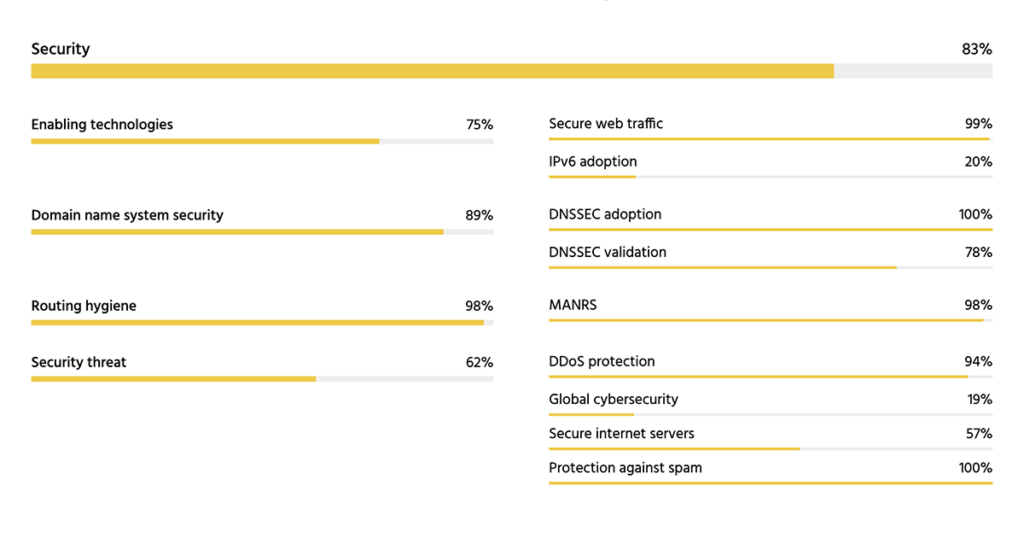
While there is room for improvement concerning its IPv6 adoption and Global cybersecurity scores it’s worth noting that:
- Global cybersecurity data is based on the ITU’s most recent Global Cybersecurity Index score, which was from 2020, so this is to be expected to be greater once the next (5th) edition is released.
- It’s made some great strides in IPv6 deployment in the last year (Figure 7).
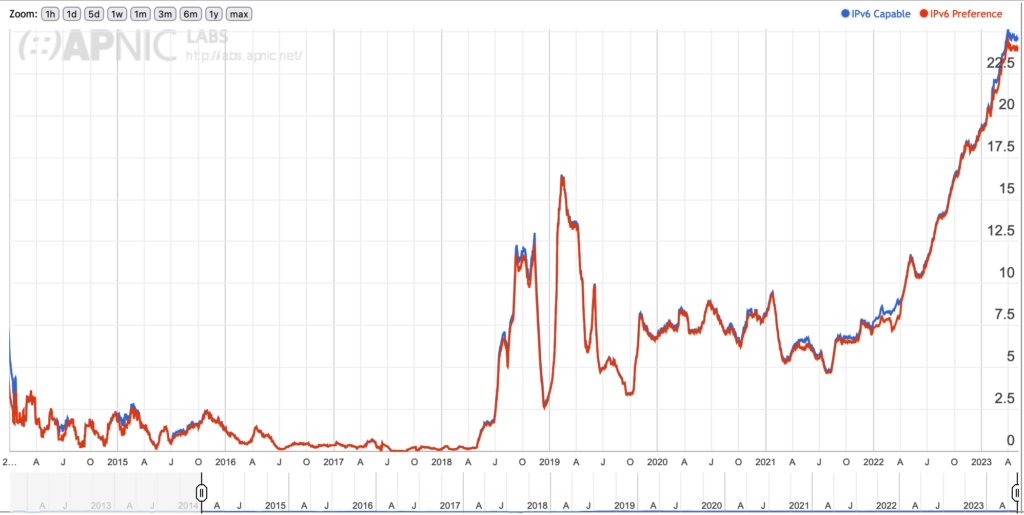
Bangladesh has the Lowest Market Readiness
To finish, let’s focus on SANOG’s host country, Bangladesh. Its overall resilience (45%) is the same as its neighbor India and is slightly lower than the average (46%) for the region.
If we isolate the four pillars for Bangladesh, we can see that three of the four are fairly similar with market readiness being the largest outlier (Figure 8).
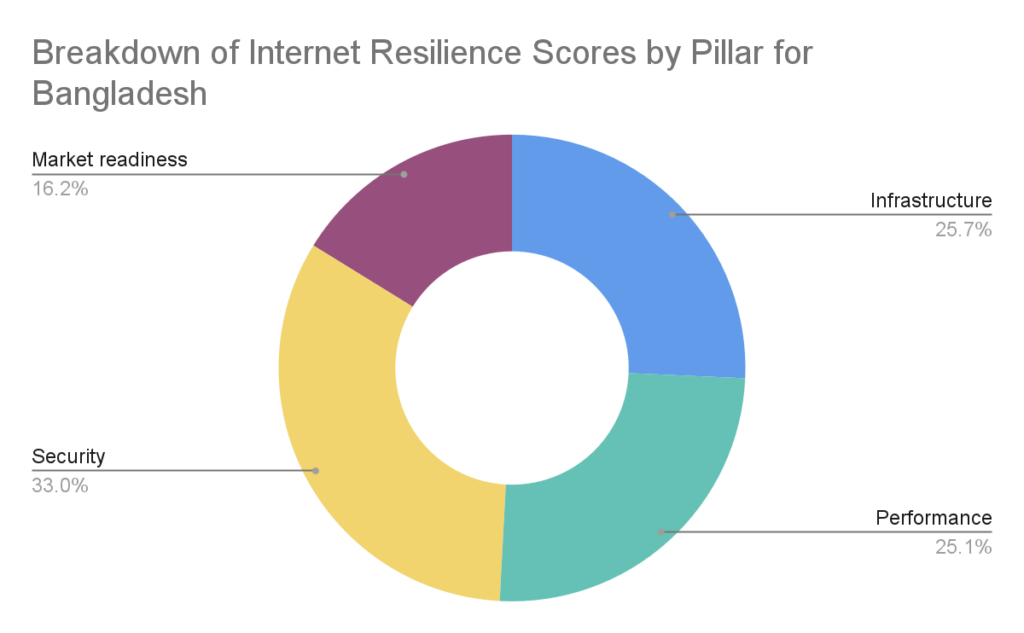
Again, if we zoom into this pillar to understand the data points that make up the Market readiness score (Figure 9), we can see that four of the six indicators score between 2 to 12% with Internet affordability (average affordability of fixed and mobile broadband) and E-Government Development Index contributing the majority to the overall score.

In terms of Upstream provider diversity, if we look at IIJ’s Internet Health Report (from which this score is derived) (Figure 10), we can see that the country is highly reliant on Hurricane Electric (AS6939) for international connectivity —nearly two out of every three packets leaving the country transits via AS6939.
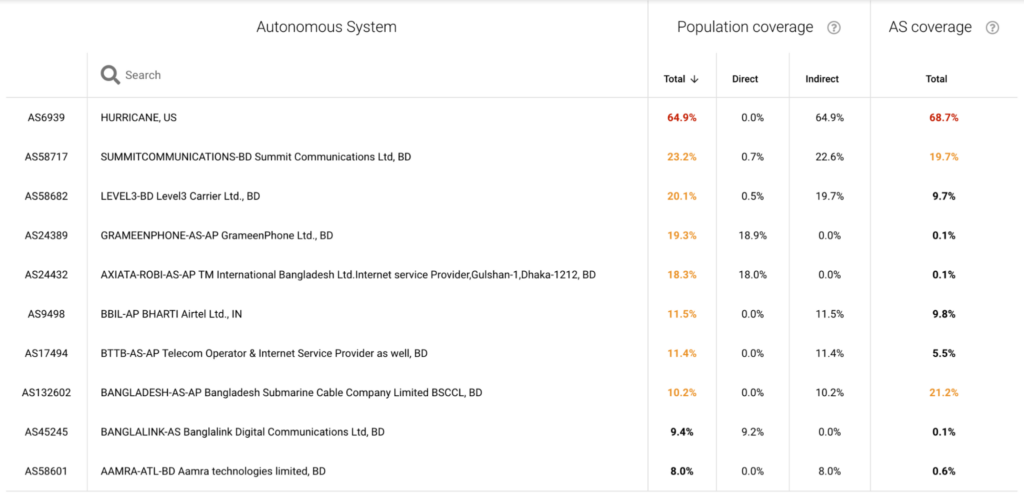
This means if Hurricane Electric were to ever go offline this would disrupt nearly two-thirds of the Internet in Bangladesh, a scenario that recently played out in Italy.
To be fair, market readiness is something that all countries in South Asia and other regions of the world are struggling with. Importantly, low-cost Internet access is not the driving factor — in many cases it is often influenced by a combination of policies to encourage greater competition, and deploying and supporting networks to connect to Internet Exchange Points which reduce transit costs and lower latency by keeping traffic local.
| Learn more about the Internet Society’s 50/50 Vision to keep at least half of all Internet traffic in emerging economies local by 2025 |
The Internet Society Internet Resilience Index (IRI) aims to offer these insights and more to help network operators and decision-makers to identify weaknesses in their Internet resilience and make data-driven decisions to address these.
Follow the Pulse Blog and subscribe to the Pulse monthly newsletter for the launch of the Internet Resilience Index in July.
Photo by NYU Stern BHR on Flickr

